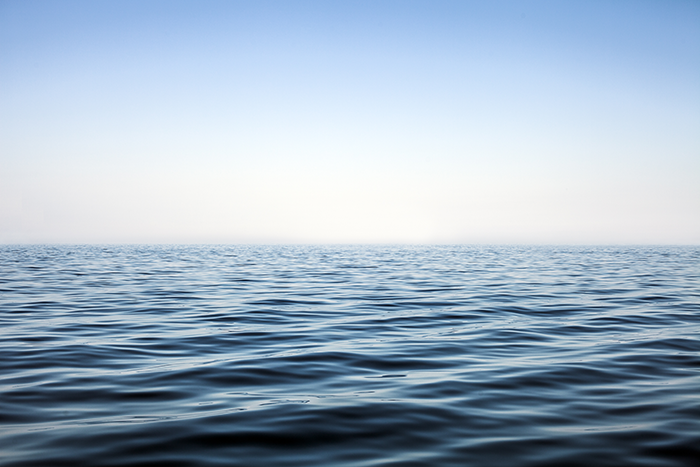Interviews / Ocean
4 March 2025
High Seas Biodiversity Treaty: A New Era for the Protection of Marine Biodiversity in the High Seas?

After 15 years of negotiations on establishing a legal framework for the protection of biodiversity in the high seas, the member states of the United Nations adopted the Biodiversity Beyond National Jurisdiction (BBNJ) treaty two years ago. With 110 signatures gathered, including those of the European Union member states, China, and Pacific countries, this agreement introduces new legal tools to address the three planetary crises of climate change, biodiversity loss, and pollution. In response to these issues, significant international mobilisation is taking place around this treaty, particularly in the lead-up to the third United Nations Ocean Conference, which will be held in Nice from 9 to 13 June 2025. Under what circumstances did the high seas biodiversity treaty emerge? What transformations could this treaty bring to the management and exploitation of the high seas? In a geopolitical context marked by the questioning of certain international treaties, what are the major challenges faced by this initiative? An analysis with Romane Lucq, an international strategy analyst specialising in maritime issues.
What is the high seas biodiversity treaty (BBNJ) and why did it take so many years to be adopted?
The high seas biodiversity treaty is an international legal instrument adopted in 2023 under the auspices of the United Nations Convention on the Law of the Sea (UNCLOS). Until then, international waters – covering 64% of the ocean and nearly half the planet’s surface – had no legally binding framework for biodiversity protection. Unlike waters under national jurisdiction, which extend up to 200 nautical miles from the coast (approximately 370 kilometres), where coastal states regulate maritime activities, the high seas remained a free space, extensively exploited but poorly protected. The Biodiversity Beyond National Jurisdiction (BBNJ) treaty was created in March 2023 to fill this legal void.
It was described as historic at the time of its adoption for several reasons. Firstly, it is the first legal framework establishing binding rules in a domain where state freedom previously prevailed. By addressing the legal gaps in UNCLOS concerning the management of high seas resources, it marks an unprecedented step towards a global approach to ocean governance. Secondly, it introduces innovative mechanisms, such as the possibility of creating marine protected areas in the high seas. It thus provides concrete tools to safeguard vulnerable ecosystems facing increasing pressures. It was also seen as a major victory for multilateralism: its adoption, after nearly two decades of discussions and negotiations, reflects a rare global consensus in a tense geopolitical climate and illustrates a collective recognition of the ecological emergency and the ocean’s vital role.
The treaty took so long to materialise mainly due to deep divisions between developed and developing countries. One major sticking point was the exploitation of marine genetic resources, which hold strategic economic potential in sectors such as pharmaceuticals and cosmetics. Some nations, possessing the means and industries necessary for their exploitation, advocated for unrestricted access to these resources. Conversely, many developing countries insisted on a mechanism for equitable benefit-sharing (both monetary and non-monetary), arguing that a lack of regulation disproportionately benefited technologically advanced nations.
How could this treaty concretely transform the management and exploitation of the high seas?
By establishing a binding global legal framework, the BBNJ treaty addresses the lack of coordination and coherence in high seas governance through four fundamental pillars. Firstly, the creation of marine protected areas in international waters, which was previously almost impossible outside regional agreements between willing states. This should contribute to the 30×30 objective, which aims to protect 30% of the ocean by 2030. Additionally, to prevent ecological risks, exploitation projects will need to undergo assessments to evaluate their impact on ecosystems. The treaty also establishes a benefit-sharing mechanism linked to the exploitation of marine genetic resources, enabling developing countries to access scientific, technological, and economic benefits. Finally, it emphasises capacity-building for developing countries, allowing them to participate in marine resource research and management.
To ensure compliance with commitments, the treaty introduces several governance mechanisms to guarantee its effective implementation. A Conference of the Parties (COP) will oversee the treaty’s application, assess progress, and adopt recommendations or necessary adjustments to improve its efficiency. This body will serve as the primary oversight institution and play a key role in coordinating signatory states. A scientific committee will also be established to assess data on the state of high seas biodiversity and the impact of human activities, which will form the basis for COP decisions, particularly concerning the designation of marine protected areas. Dispute resolution mechanisms, inspired by those in UNCLOS, will be in place to resolve conflicts between states regarding the treaty’s interpretation or application.
While the treaty transforms high seas governance by enabling a more coordinated approach and more effective regulation of certain human activities, its implementation will heavily depend on states’ willingness to honour their commitments and incorporate them into national legislation.
What are the main challenges to ensuring the treaty’s entry into force and effective implementation? What is the status of ratification?
The agreement was reached on 4 March 2023 and formally adopted on 20 June of the same year at the United Nations. However, for the text to become legally binding and enter into force, at least 60 states must ratify it. This process is progressing slowly, with several states still hesitant to fully commit. Behind this reluctance lie economic, political, and strategic considerations that hinder their adherence. While 110 states have signed the treaty – signalling their intent to ratify it – only 18 countries have ratified it so far, including France, which submitted its ratification instrument to the United Nations on 5 February. Beyond ratification, the treaty’s practical implementation presents logistical and technical challenges. For example, while the text provides for the creation of marine protected areas in the high seas, monitoring them and ensuring compliance with associated regulations remains a challenge. The high seas cover nearly half the planet: effective oversight in such vast spaces will require enhanced surveillance capabilities, leveraging both technology and inter-state cooperation. The treaty’s implementation also raises a broader issue of shared responsibility. Without strong commitment from all stakeholders, this ambitious framework risks remaining largely theoretical due to a lack of resources and political will for large-scale application.
The third United Nations Ocean Conference (UNOC3), set to take place in Nice from 9 to 13 June 2025, could play a crucial role in accelerating ratification. This conference, which will bring together states, international organisations, NGOs, and economic actors, aims to advance the implementation of Sustainable Development Goal 14 (SDG 14) concerning marine conservation. It could help increase diplomatic pressure on hesitant states, mobilise funding to support ocean conservation efforts, enhance the sharing and dissemination of scientific knowledge to improve policymaking on ocean-related issues, and strengthen the foundations for effective international governance of the high seas.

